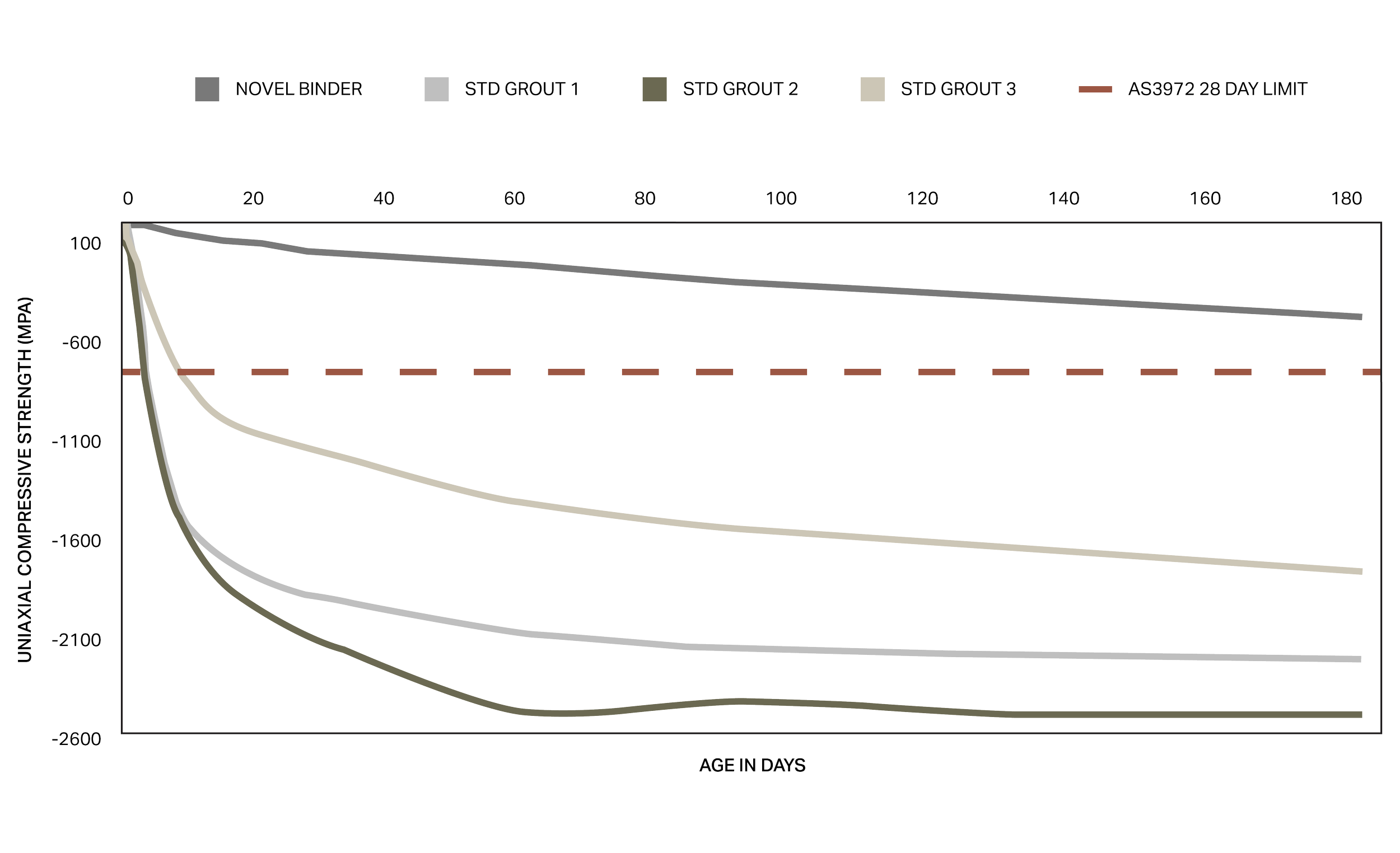ECOSCITEC INNOVATIONS
OUR TECHNOLOGY
Introducing the high performance NPOC Hydration Binder. The first of many soon to come Patents and Projects that EcoSciTec has developed or is in development. This cutting-edge process offers an exceptional alternative with an extremely low embodied carbon footprint, addressing environmental concerns without compromising performance, in fact enhancing it! Leveraging unmodified raw materials, sourced from various channels including waste from new production or repurposed from landfill, stockpile, or waste heaps, this formulation disregards feedstock inconsistencies, ensuring flexibility in sourcing.
REVOLUTIONISING CONSTRUCTION: INTRODUCING A HIGH-PERFORMANCE HYDRATION BINDER REDUCING CO2 EMISSIONS DRAMATICALLY.
What sets this binder apart is its entirely novel hydration mechanism, drawing inspiration from naturally occurring minerals. This innovative approach significantly reduces carbon dioxide emissions to as low as 93kg per tonne, a drastic improvement compared to traditional Ordinary Portland Cement (OPC) with emissions averaging over 850kg per tonne. Embracing sustainability while pushing the boundaries of performance, this high-performance Hydration Binder promises a greener, more efficient future for construction and building products manufacturers.
STRENGTH GAIN VERSUS TRADITIONAL OPC:
SHRINKAGE PERFORMANCE BELOW SHOWS PERFORMANCE AGAINST TRADITIONAL PRODUCTS:
TECHNOLOGICAL INNOVATION
The pursuit of low embodied carbon cement spurs innovation and technological advancement in the construction industry. From alternative binders to carbon capture and utilisation technologies, researchers and industry stakeholders are exploring diverse avenues to reduce emissions and enhance sustainability. This culture of innovation not only fosters resilience but also catalyses transformative change, laying the foundation for a more sustainable and prosperous future.
CO2 Emissions from Different Cements and Binders
Understanding the CO2 emissions associated with various types of cement and alternative binders is crucial in evaluating their environmental impact. The table on the left provides a comparative overview.
These values are approximate and can vary depending on factors such as manufacturing processes, raw materials used, and regional differences. The table illustrates the potential for significant CO2 emissions reductions through the adoption of alternatives such as the technology behind the NPOC Hydration Binder from EcoSciTec Innovations.
CHARTING THE PATH FORWARD
The transition to low embodied carbon cement necessitates collaborative action across the cement industry, governments, academia, and civil society. Key strategies to accelerate this transition include:
-
Governments and private sector stakeholders must prioritise funding for research and development initiatives aimed at advancing low embodied carbon cement technologies. The Paris agreement targets for all countries involved are clear, it sets out the milestones that must be achieved through to 2030 and beyond to 2050.
-
Governments can incentivise the adoption of low embodied carbon cement through regulatory frameworks, tax incentives, and procurement policies that prioritise sustainability.
-
Cement manufacturers, construction companies, and supply chain partners should collaborate to share best practices, promote innovation, and scale up sustainable solutions.
-
Educating consumers and stakeholders about the environmental benefits of low embodied carbon cement is essential in driving demand and fostering market transformation.
BUILDING A SUSTAINABLE FUTURE
As we stand at the crossroads of environmental crisis and opportunity, the adoption of low embodied carbon cement emerges as a cornerstone of sustainable development. By reimagining the way we produce and consume cement, we can mitigate climate change, foster economic prosperity, and build resilient communities for future generations. Embracing this transformative shift requires collective action, bold leadership, and unwavering commitment to a shared vision of a sustainable future. Together, let us pave the path to a world where prosperity thrives in harmony with the planet.








